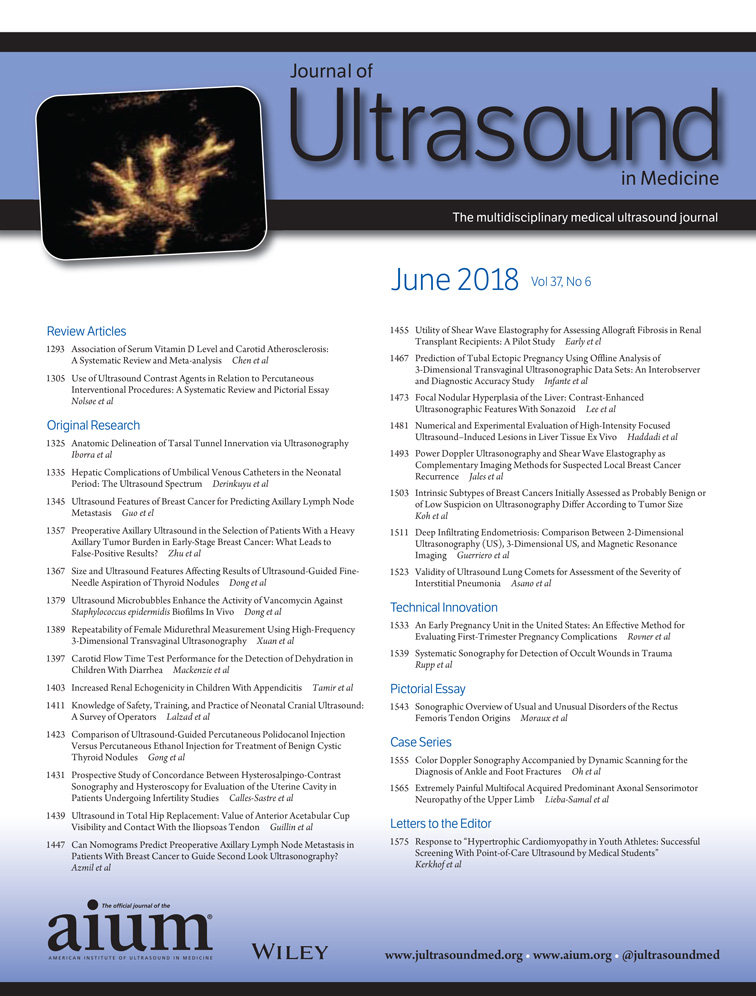Size and Ultrasound Features Affecting Results of Ultrasound-Guided Fine-Needle Aspiration of Thyroid Nodules
Drs Dong and Mao contributed equally to this work.
We thank all the nurses and staff working in the Department of Ultrasound of Ruijin Hospital. This study was supported by the National Clinical Key Specialty Construction Projects of China and the National Natural Science Fund (grant 81471668).
Abstract
Objectives
Our goal was to assess the diagnostic efficacy of ultrasound (US)-guided fine-needle aspiration (FNA) of thyroid nodules according to size and US features.
Methods
A retrospective correlation was made with 1745 whole thyroidectomy and hemithyroidectomy specimens with preoperative US-guided FNA results. All cases were divided into 5 groups according to nodule size (≤5, 5.1–10, 10.1–15, 15.1–20, and >20 mm). For target nodules, static images and cine clips of conventional US and color Doppler were obtained. Ultrasound images were reviewed and evaluated by two radiologists with at least 5 years US working experience without knowing the results of pathology, and then agreement was achieved.
Results
The Bethesda category I rate was higher in nodules larger than 15 mm (P < .05). The diagnostic accuracy was best in nodules of 5 to 10 mm in diameter. The sensitivity, accuracy, PPV, and LR for negative US-guided FNA results were better in nodules with a size range of 5 to 15 mm. The specificity, negative predictive value (NPV), and LR for positive results and the Youden index rose with increasing nodule size. Seventeen false-positive and 60 false-negative results were found in this study. The false-negative rate rose with increasing nodule size. However, the false-positive rate was highest in the group containing the smallest nodules. Nodules with circumscribed margins and those that were nonsolid and nonhypoechoic and had no microcalcifications correlated with Bethesda I FNA results. Nodules with circumscribed margins and those that were nonsolid, heterogeneous, and nonhypoechoic and had increased vascularity correlated with false-negative FNA results. Borders correlated with Bethesda I false-negative and false-positive FNA results.
Conclusions
Tiny nodules (≤5 mm) with obscure borders tended to yield false-positive FNA results. Large nodules (>20 mm) with several US features tended to yield false-negative FNA results.




